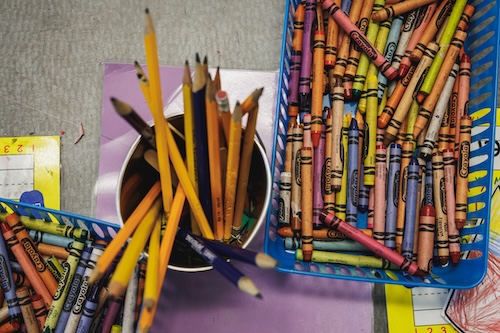
The work of a teacher has infinite moving parts. There’s the upcoming required interim district assessment to prepare for. There’s the new school-wide social-emotional learning program to internalize and implement. There’s the rubric to design and the parent to call and the grade-team meeting to attend.
As teachers, we know it’s essential for these moving parts to coherently align with each other, and experts agree. Unfortunately, while critical, this is rarely the reality teachers experience, particularly when it comes to the way assessing student academic progress aligns with the rest of their work. A 2023 survey showed that only 29% of teachers said they received formative assessments aligned to their curricular materials, and only 38% said they received professional learning to support them in aligning assessment data to their everyday practice.
As current classroom teachers, we know that when these moving parts don’t align, it creates a disconnect between our day-to-day work of teaching and learning and the training and materials we receive to assess student progress. We believe if these moving parts were better aligned, assessments could not only produce the data districts and states need to evaluate progress but also add to the day-to-day learning experience rather than subtract from it. Here’s how.
Aligned curriculum
Every educator has had to put a pause on their daily teaching to prepare students for a midyear assessment that lived outside of the scope of their current curriculum. We believe in the power of having district-wide assessment data and understand how critical it is to be able to evaluate progress across schools. We’re not against this practice, but when you have to stop in the middle of your curriculum and switch to focus on something that feels wholly separate from your lessons, it disrupts the day-to-day flow of your classroom.
Assessments should be aligned to the curricular content we are currently delivering in our classrooms. They should be an integrated part of the learning experience that blends in authentically with what we’re already doing. It shouldn’t be a compliance exercise but rather a tool to help us gauge exactly where our students are in their learning journey and to inform how to help them excel.
Aligned data
Because our required interim assessments rarely align with the curriculum we’re teaching, finding direct connections between the data produced and the skills we’re currently teaching is challenging. Often, when we receive data back from these assessments, they simply confirm that the students we thought were in need of extra support are. We then ask ourselves, “What do I do with all of this information?” Understanding how to support students in mastering specific skills is rarely obvious from the data we receive. We need meaningful data.
Aligning assessments to school- or district-wide curricula would make the data more actionable by making explicit the connection between what we just taught, the results of the assessment, and what we’re teaching next. Ultimately, this would support us as we support our students in mastering content and skills.
Aligned training
Equally important to aligning curriculum and assessments is aligning assessments and professional learning. Often, in our experience, the training we receive around assessments is specific to how to administer the required test or share data back with the district. While these things are important, they do not help us understand how to leverage the data in our own teaching practices.
Professional learning related to assessments should be timed for when we actually receive assessment data. Research shows that effective professional learning leverages the instructional materials teachers are already using and offers an opportunity for real-life practice. In line with this, assessment-aligned training should walk us through how to leverage our assessment results in real time in order to improve student learning in our classroom. This will not only support teachers in assessing data in the moment, but also bolster their ability to do so in the future without this training.
Change is needed
By aligning the moving parts of delivering instruction and measuring its success, the education field can help teachers paint a clearer big picture to work within. If we do this, assessments will become an integral part of that picture, rather than the compliance exercise many teachers currently see them as.






